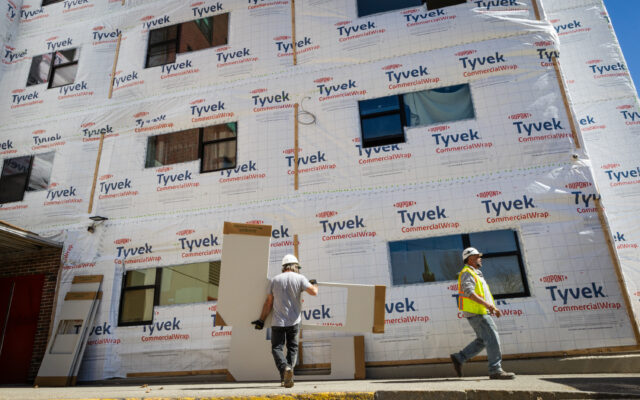
3 comparisons putting Maine’s housing crisis into perspective
By Zara Norman, Bangor Daily News Staff
Mainers consider the housing crisis to be a bigger problem than any of the others facing our state.
The lack of housing inventory at all income levels, which was caused by historic underproduction and higher migration rates, has sent home prices soaring in recent years. It is harming Maine businesses and shutting many out of the housing market entirely.
Average home values and median home prices increased more in Maine in the last year than they did nationally. Other northeastern states have seen bigger hikes. But other metrics show that the crisis is virtually as bad here than anywhere else nearby, especially when you account for the fact that incomes are lower in Maine than in any other state in the region.
Here are three datapoints putting Maine’s housing crisis into perspective.
Sale prices are growing nearly as fast here as anywhere in New England.
Median home sale prices are growing nearly as fast in Maine as they are in any other northeastern state. Regionally, they’ve increased by anywhere from 5.9 to 11.3 percent in the last year. Maine is riding the middle at 8.2 percent, higher than any New England state besides Rhode Island, according to Redfin.
To purchase the median home for sale in Maine right now, you need an income of just under $112,000 a year, assuming no debts and a $20,000 down payment, according to Zillow’s affordability calculator. The median household income here is a little under $72,000, according to census data. That shows how out of whack the housing economy is for the average person.
Home values in Portland are growing as fast as they are in Boston.
Over the past year, there have been signs that Portland’s red-hot pandemic housing market is slowing down. But that’s all relative. Home values here still grew by 3.8 percent over the past year as of November, which was only slightly below Boston at 4 percent, according to Zillow.
But when stacked up against the other largest cities in each New England state, Portland is second only to Burlington in seeing the lowest increase in home values in the past year. Providence, Rhode Island, has seen the largest hike, followed by Bridgeport, Connecticut.
Both those cities are facing major shortages and price increases, although they are still far cheaper markets to buy in than Portland. The typical home value in Providence is just over $400,000, which is roughly in line with Maine’s statewide average.
Maine’s rental crisis is worse than in this nearby Canadian city.
The southern Quebec city of Sherbrooke — only 40 miles from Maine’s western border — is in the midst of an “unprecedented housing crisis,” according to a local news outlet.
The city had a vacancy rate of only about 1 percent in October and 25 percent of households are spending more than 30 percent of their income on rent. Here in Maine, that latter figure is far worse.
Nearly half of all renters in both Bangor and the Portland-South Portland area are spending at least 30 percent of their income on housing, data from Harvard University found. Roughly 45 percent of renting households in those areas pay over 30 percent of their income on housing, and 24 percent pay more than 50 percent.
As in Sherbrooke, officials here attribute the crisis to a low vacancy rate, a lack of affordable housing supply and the high cost to construct new units. The reasons for the crisis are clear everywhere, but the solutions are coming slowly.